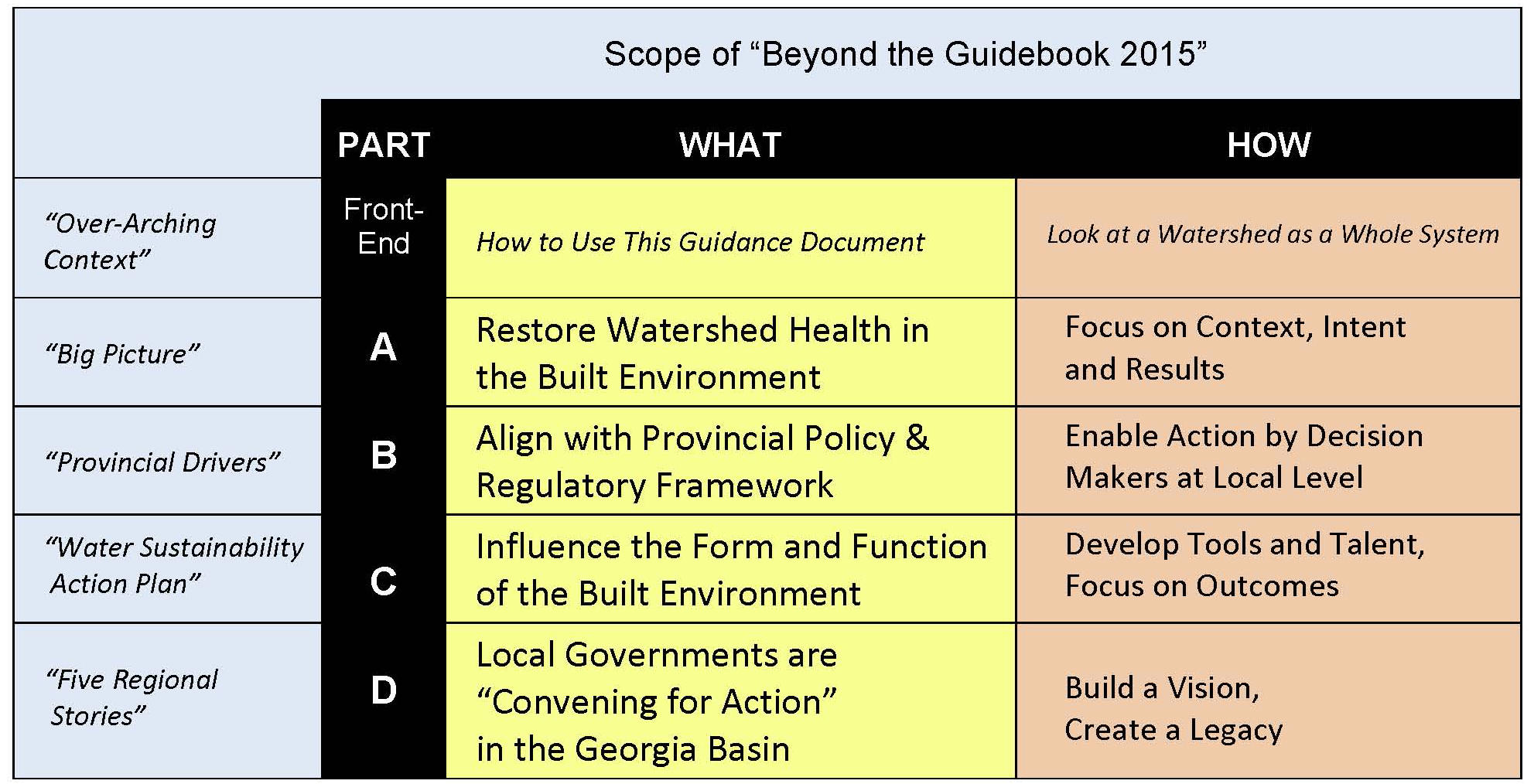Beyond the Guidebook 2015: Local Governments in the Georgia Basin are ‘Learning by Doing’
Note to Reader:
Released in November 2015, Beyond the Guidebook 2015: Sustainable Watershed Systems, through Asset Management is structured in four parts to meet the information needs of different audiences. Local governments learn from each other and progress through sharing of case study experience. Hence, the spotlight is on Part D because it tells five regional stories, that is – for the Capital, Cowichan, Nanaimo, Comox Valley and Metro Vancouver sub-regions within the Georgia Basin.
To download a copy of Beyond the Guidebook 2015, click on this link: https://waterbucket.ca/viw/files/2015/11/Beyond-Guidebook-2015_final_Nov.pdf
Local Governments are “Convening for Action” in the Georgia Basin
’Part D is written for land use, water resource and infrastructure professionals who are interested in and wish to understand the work of local government champions,  both organizations and individuals,” reports Kim Stephens, principal author of Beyond the Guidebook 2015, and the Executive Director of the Partnership for Water Sustainability in British Columbia. The Partnership is the secretariat for the Georgia Basin Inter-Regional Educational Initiative. This provides the umbrella for collaboration on the part of five regional districts representing 75% of the population of British Columbia.
both organizations and individuals,” reports Kim Stephens, principal author of Beyond the Guidebook 2015, and the Executive Director of the Partnership for Water Sustainability in British Columbia. The Partnership is the secretariat for the Georgia Basin Inter-Regional Educational Initiative. This provides the umbrella for collaboration on the part of five regional districts representing 75% of the population of British Columbia.
Build a Vision, Create a Legacy
“We all learn from stories and the most compelling ones are based on the experiences of those who are leading in their communities,” continues Kim Stephens. “By telling the stories of those who are spearheading changes in practice, this helps other local governments eliminate the ‘disconnect between information and implementation’ that may otherwise hold them back.”
“The members of the Inter-Regional Leadership Team are champions. They are collaborating across regions and leading the move from awareness to action to implement watershed-based solutions.”
“The five collaborating regions view the Watershed Health Goal through complementary lenses that together form a complete picture. These lenses are watershed plan effectiveness, watershed health assessment, climate change adaptation, sustainable service delivery, and sustainable partnerships”.
To Learn More, Click On:
Comox Valley-CAVI Regional Team
Convening for Action in Cowichan Region
Convening for Action in Nanaimo Region
Convening for Action in Capital Region
Convening for Action in Metro Vancouver




